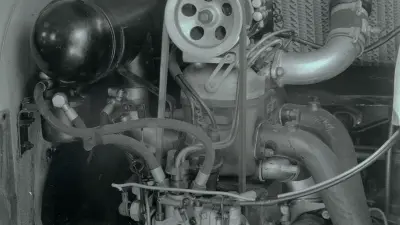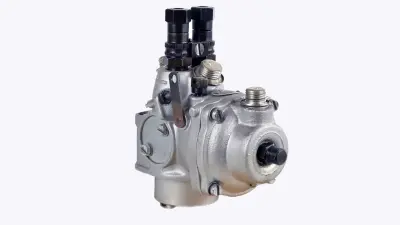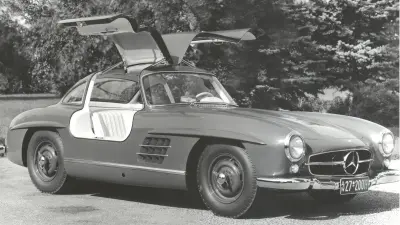Bosch brings gasoline injection to cars

First in aircraft, then in a compact car, then in a luxury coupé and now as standard. It is hard to imagine otherwise, but gasoline injection was no ordinary Bosch product.
The crossover to cars
There are good reasons why the story behind this product is so erratic. It all started when Bosch developed the gasoline injection process for aircraft in the early 1930s, as a way of boosting engine performance. In 1945, when the Nazi regime, which had dominated Germany since 1933, finally fell, so too did the aerospace industry, which had largely been geared up on a war footing.
The question at Bosch now, was where else could this expensive technology be put to good use? It was certainly worth trying it out in cars, although Bosch engineers had already done just that in the 1920s – without success.

Almost 30 HP

A number of engine developers who were very familiar with the technology went to automakers such as Gutbrod, which meant that Bosch had trusted contacts who could offer outside help. Power was a particularly fascinating aspect to injection technology in cars and was increased from 26 to 30 HP on the Gutbrod Superior 700, a two-seater with a fold-down sun shade. However, the engineers’ main achievement was actually to curb the excessive thirst of the simple two-stroke engine. The carburetor version of the compact car, which was exhibited at the Frankfurt Auto Show in 1951, consumed a good eight liters of gas per 100 kilometers.
From tentative beginnings to standard
The first attempt to use the technology in cars was unsuccessful. In 1952, gasoline consumption was not really an issue, and it was only when it was used in the luxury class that a customer base was found, offering far greater engine power. The car in question was the legendary 1954 Mercedes-Benz 300 SL gullwing, which helped well-to-do buyers get from A to B fast thanks to its 215 HP – thanks to the Bosch injection pump, produced from December 1954. The feasibility of the technology had now been proven, but it would still take more than 30 years until gasoline injection would finally overtake its predecessors, carburetors. With approximately 1,400 units manufactured, the 300 SL was no mass product. Gasoline injection made only gradual progress in the premium segment and usually on an indirect rather than direct basis. Engines fitted with the system were quieter, but less powerful.
Even a good decade later, when electronically controlled systems were launched in 1967, it was still a niche market. The real breakthrough only came when stricter emissions laws were introduced in the late 1960s and 1970s.
That gave gasoline injection a distinct advantage that made it indispensable: It could be adapted perfectly to the use of catalytic converters, which reduce emissions by up to 90 percent and are now an essential component in every new car.

Author: Dietrich Kuhlgatz
